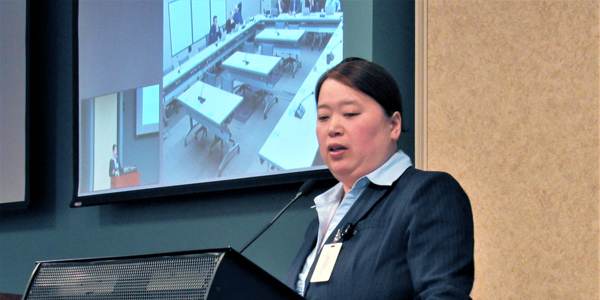By Amanda Durish Cook
MISO will release results from its regional transmission overlay study by December — nearly two years ahead of schedule.
The RTO finished the overlay analysis earlier than the slated 2019 finish, citing the collapse of the Clean Power Plan as a factor in speeding up the process.
“Originally, we set aside three years,” said Lynn Hecker, MISO manager of expansion planning.
Hecker said MISO “no longer has the urgency of the Clean Power Plan,” so the more specific planning work of the study would become more protracted, broken up over MISO’s usual annual planning Transmission Expansion Plan studies. Furthermore, transmission issues gleaned from the overlays could inform specialized, targeted studies in the MTEP 18 planning cycle, she said.
MISO will generally “shift away” from studies that run three years to focus on one-year studies in order to provide detailed transmission needs instead of a “macro look,” Hecker said. However, the RTO learned “valuable” economic and reliability lessons from the overlay study, which was originally meant to inform long-term transmission planning as the resource mix shifts. The study created a possible transmission map — or overlay — for each of the three future scenarios in MTEP 17. (See MISO Planners Looking at 3 La. Projects, Overlay ‘Skeleton’.)
A second round of preliminary overlay results using an existing fleet projection shows several 345-kV line additions in MISO Midwest, as well as a handful of 500-KV lines in — and one leading into — MISO South. The “policy regulations” future shows a bigger network of 345-kV lines in the Midwest region and multiple 500-kV lines in MISO South. One DC line would link South and Midwest while another would stretch from Arkansas to Iowa.
The “accelerated alternative technologies” future depicts a large network of 765-kV lines in the Central region, including two 765-kV paths connecting with South, and a DC line across North Dakota and Minnesota, in addition to the proliferation of lines in Midwest and South.
“Now that we’ve closed the books on the regional transmission overlay process, it’s time to take a closer look … to address targeted studies further and answer stakeholder questions,” Hecker said.
She said future targeted studies could be themed, focusing on transmission issues across seams, generation retirement impacts, increased distributed energy resources, grid stability in Minnesota and Wisconsin, renewable integration impacts and potential transmission to support “resilient” resources — a concept handed down by the recent Energy Department grid study and yet to be explored by MISO.
Several stakeholders balked at MISO’s mention of studies based on “resiliency,” but MISO Director of Policy Studies J.T. Smith assured attendees that the RTO and its stakeholders would together set out to define the concept in later public meetings.
“In the meantime, MISO will continue on the complicated process to improve the alignment of the project costs and benefits,” Hecker promised stakeholders during a Sept. 25 special conference call of MISO’s Economic Planning Users Group.
Some stakeholders asked why MISO did not consult its own generator interconnection queue to inform the overlays.
Hecker said the RTO took “a much more forward-looking” approach, examining congestion 20 years out amid MISO’s shifting resource mix.
“We did a best guess of where generators will be sited in the future,” she said.
The study will not be used to justify projects in future MTEP cycles, which will still require the usual rigorous MTEP studies.
The overlays “will help us look at if what is needed in the short-term will be compatible with long-term needs,” Hecker said. “They’re multiple, long-term views of what transmission may be needed.”
Wind on the Wires’ Natalie McIntire noted that there are “several” lines that appear in all three preliminary overlays. She asked if MISO planned to use the recurring lines as part of a “no regrets” lineup of projects.
Hecker acknowledged the “commonalities” between overlays, but she said that MISO would not guarantee it would include the lines in a future list of recommended projects, despite their possible recurrence in future MTEP planning cycles.





